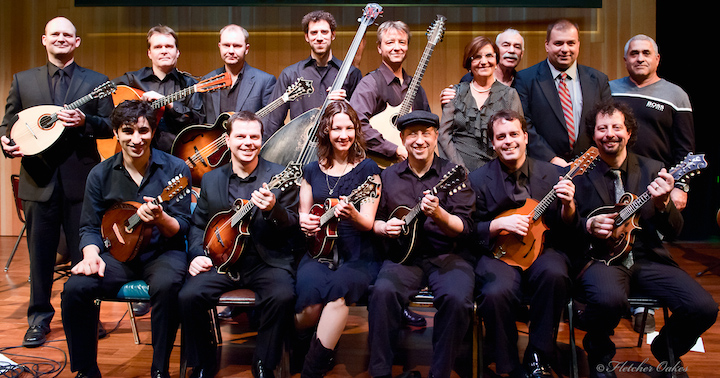
While researching his roots a few years ago, Avner Yonai, an Israeli-American, found a tattered old picture of a mandolin orchestra from the Polish town of Gora Kalwaria — its Yiddish name was Ger. It inspired him to to recreate what had been a popular form of community musicmaking a century ago.
- OPEN LETTER | Christina Petrowska Quilico Remembers Pierre Boulez - January 7, 2016
- Op-ed: The Compositional Voice and the Need to Please - September 4, 2014
- Onomatopoeia: The Thin Edge New Music Collective Sounds Off - May 10, 2014
The band that grew out of Yonai’s old photo — the Ger Mandolin Orchestra — makes its Canadian debut on Thursday, Nov. 7 at the George Weston Recital Hall.
Under the direction of multi-Grammy winner Mike Marshall, the ensemble features 11 of the world’s finest mandolinists, including Eric Stein, artistic director of Toronto’s Ashkenaz Foundation.
For more information on the concert, click here.
Stein has written a quick history of mandolin orchestras, and how they became a powerful force of community cohesion:
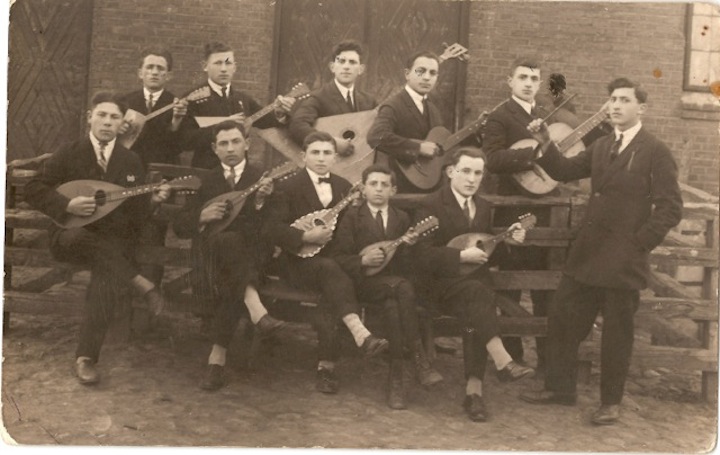
Though ostensibly devoted to re-creating the Jewish mandolin orchestra that was active in the Polish town of Gora-Kalwaria during the 1920s, the Ger Mandolin Orchestra is representative of a musical phenomenon once widely popular among a variety of cultural communities in Europe and North America.
Originating in renaissance-era Italy, and briefly fancied as a classical solo instrument by composers like Vivaldi and Mozart, the mandolin achieved its heyday as a folk and popular music instrument in the late 19th and early 20th centuries.
Mandolin clubs (often including banjo and guitar players) sprang up across Europe at this time. The stringed instrument offered non-professional musicians ready opportunities to create and enjoy music in community settings. The mandolin’s adaptability to different musical styles made it the quintessential instrument of the people.
The mandolin was particularly popular in Jewish communities of Eastern Europe. The egalitarian ethos of the instrument – cheap, portable, fairly easy to learn – dovetailed well with the social and political climate of the era.
The secular Yiddish school system of the time taught music with picked/plucked instruments such as mandolins, balalaikas, domras, banjos and guitars.
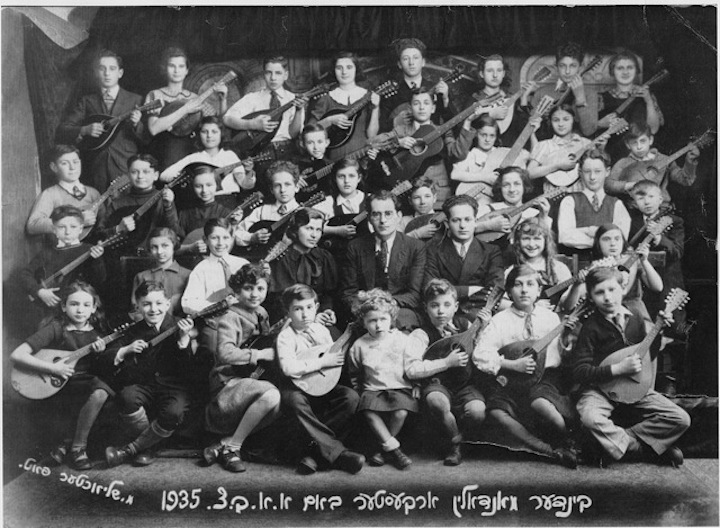
Old photographs reveal an incredible range of these orchestras in Jewish communities of eastern Europe, including the school orchestras, progressive young adult ensembles, semi-professional groups like the original Ger Mandolin Orchestra, and all-female groups.
In fact, the mandolin and its variants offered one of the only acceptable means of musical expression for women in this era.
The movement was strongest in Tsarist-era Russian and Ukraine, where the balalaika and domra sat at the forefront of a national folk music culture. Conservatories offered formal study and produced highly skilled instrumentalists and orchestras that blended folk themes with traditional classical elements.
The millions of southern and eastern Europeans who emigrated to the Americas between 1880 and 1920 brought along their instruments and musical traditions. Intersecting with a corresponding boom in the popularity of mandolins and plectrum instruments in America, this was to be the golden age of the instrument.
Mandolin ensembles toured the vaudeville circuits and sprang up on college campuses, their folksiness fitting the American ethos perfectly.
Shrewd retailers and mail-order companies like Montgomery-Ward and Sears capitalized on the trend, offering cheap instruments and sheet music that included arrangements of folk, light classical, and popular music of the day such as foxtrots, waltzes and marches.
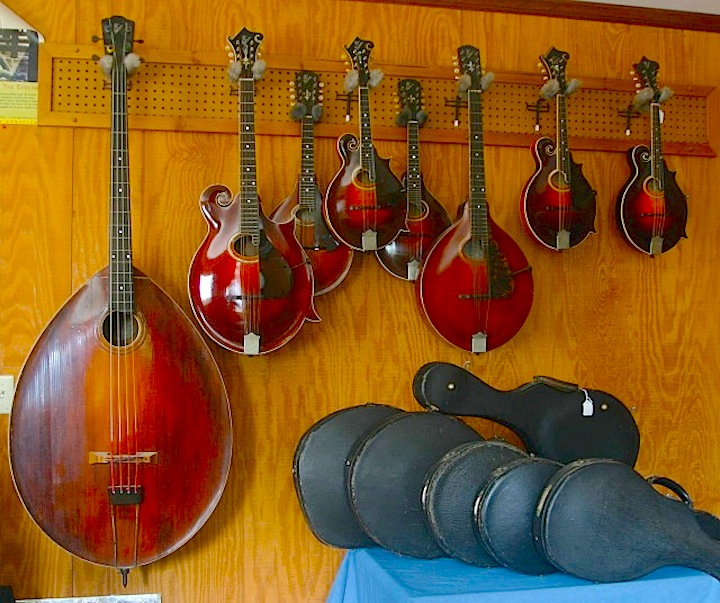
American luthiers such as Orville Gibson (of Gibson guitar fame) quickly began to experiment with variations on the classic Italian mandolin. His flat-back, carved-top mandolin design eventually replaced the bowl-back Italian instruments in America.
The Gibson company also developed a full family of orchestral mandolins (mandolin, mandola, mandocello and mandobass) and launched colourful and aggressive promoted new community mandolin ensembles.
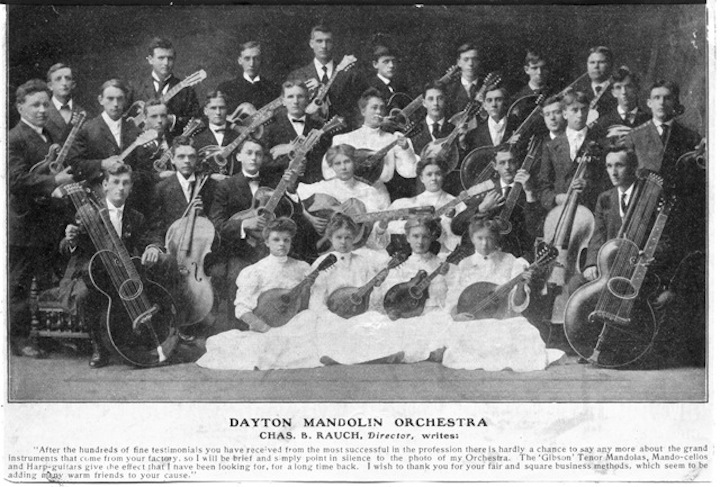
Mandolin clubs and orchestras formed rapidly around women’s groups, fraternal organizations, unions, and religious organizations. Reinforcing the members’ group identity through communal music-making, mandolin orchestras were as much vehicles for social interaction and cultural cohesion.
Among immigrants, the instrument’s old-world musical associations represented cultural continuity as a counterweight to assimilation.
But the mandolin craze began to ebb as quickly as it had begun, thanks to the more raucous sounds of the Jazz Age and the advent of commercial recording and, later, radio. People no longer needed to play music in order to hear it. There was only a handful of mandolin orchestras left by the end of World War II.
There has been a revival of interest in the mandolin and mandolin orchestras in recent years, but it will never achieve the heights it reached a century ago.
Eric Stein
is artistic director of the Ashkenaz Foundation in Toronto
Here is a bit of new (Taylor Swift, played by Mandolinenorchester Ettlingen) and old (“Shalom aleichem” played by the mandolin orchestra of Zgorzelecka), followed by the Ger Mandolin Orchestra performing in Warsaw in 2011:
- OPEN LETTER | Christina Petrowska Quilico Remembers Pierre Boulez - January 7, 2016
- Op-ed: The Compositional Voice and the Need to Please - September 4, 2014
- Onomatopoeia: The Thin Edge New Music Collective Sounds Off - May 10, 2014



